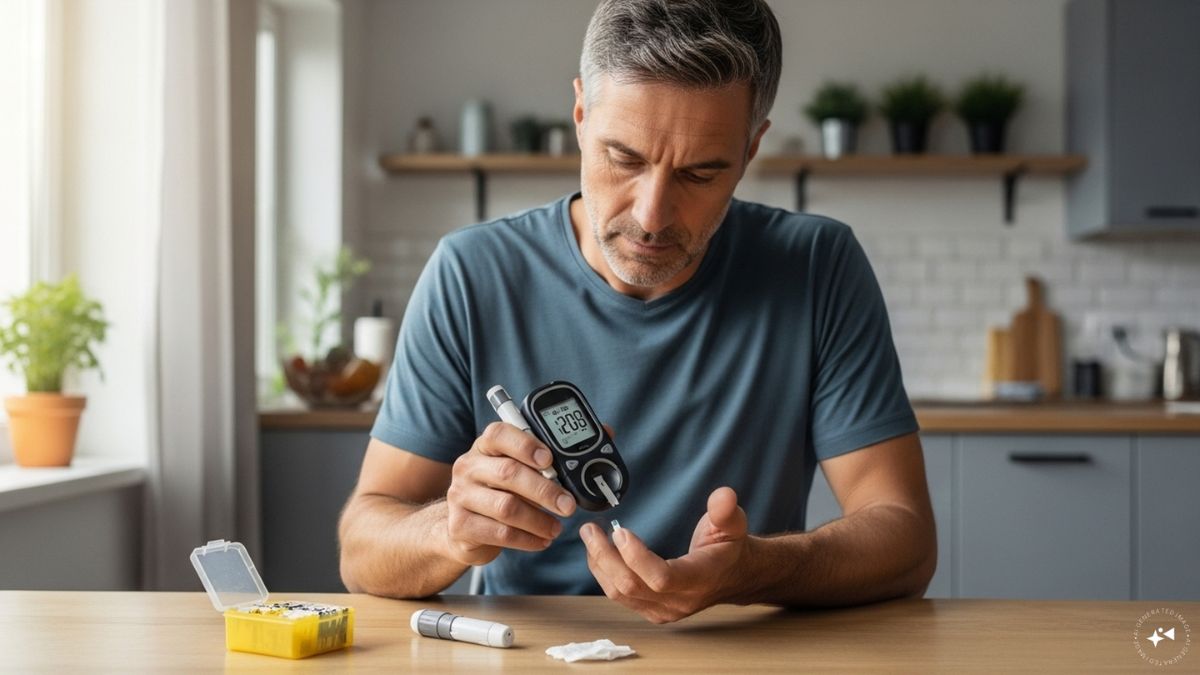The number of people with diabetes has risen worldwide, crossing 800 million last year.
When a person is told they have diabetes, it is usually clear whether it is Type 1 or Type 2.
But is this rise only due to these two types? Not really.
There is a lesser-known condition that is often mistaken for Type 1, called Type 1.5 diabetes.
What is this condition? How is it caused, and what are the symptoms?
Here’s a look at everything we know:
What is Type 1.5 diabetes?
Latent autoimmune diabetes in adults (Lada), often called Type 1.5 diabetes, shares traits of both Type 1 and Type 2 diabetes.
Health experts believe Lada is caused by an autoimmune reaction, similar to Type 1. But it usually develops in adulthood and progresses slowly, like Type 2, which is why it is often mistaken for Type 2 diabetes.
Its symptoms do not exactly match either Type 1 or Type 2, which can lead to a delayed or incorrect diagnosis and may increase the risk of health complications over time.
Lada occurs when the immune system attacks the insulin-producing cells in the pancreas, eventually stopping insulin production.
How rare is it? How is it different from Type 1 and Type 2?
Even though it is not widely known, Lada is fairly common.
Studies show that between four and twelve per cent of people initially diagnosed with Type 2 diabetes are later found to have Lada, according to Cleveland Clinic.
To put this in context, around 530 million adults have Type 2 diabetes globally, meaning several million could have Lada.
So how is it different from the other types?
Impact Shorts
More ShortsLike Type 1, this condition involves the immune system attacking the insulin-producing cells.
But people with Type 1.5 often do not need insulin straight away because the disease progresses more slowly. Most will require insulin within five years, while those with Type 1 usually need it from the start.
Type 1.5 is typically diagnosed in adults over 30, which is older than the usual age for Type 1 but younger than the common age for Type 2.
Causes of Type 1.5 diabetes
Researchers think Lada occurs when antibodies mistakenly attack the insulin-producing cells in the pancreas.
Without insulin, sugar (glucose) builds up in the blood, similar to Type 1 diabetes. People with Type 1 need insulin to survive and are usually diagnosed as children or teenagers.
However, like Type 2 diabetes, Lada often appears in adults and develops slowly. The pancreas gradually stops producing insulin, which can make symptoms hard to notice at first.
Symptoms of Type 1.5 diabetes
The signs of Type 1.5 diabetes are similar to other forms of diabetes. Common symptoms include:
Excessive thirst
Unexplained weight loss
Extreme tiredness
Frequent urination
Increased hunger
Blurred vision
Cuts and bruises that take longer to heal
Itchy, dry skin
How is Type 1.5 diabetes treated?
Type 1.5 diabetes is usually managed at first with oral medications to keep blood sugar levels within a normal range.
Depending on their control and the medication used, people with Type 1.5 often need to check their blood sugar several times a day.
There is no single standard treatment for Lada. Some doctors recommend starting insulin right away, while others prefer to delay insulin injections until necessary.
Lance Bass, known for being part of the American pop band NSYNC, said last year that he has this condition, which helped raise awareness about it.


)

)
)
)
)
)
)
)
)



